
Hexen: Beyond Heretic is a fantasy first-person shooter video game developed by Raven Software and published by id Software distributed through GT Interactive on October 30, 1995. It is the sequel to 1994's Heretic, and the second game in Raven Software's "Serpent Riders" trilogy, which culminated with Hexen II. The title comes from the German noun Hexen, which means "witches", and/or the verb hexen, which means "to cast a spell". Game producer John Romero stated that a third, unreleased game in this series was to be called Hecatomb.
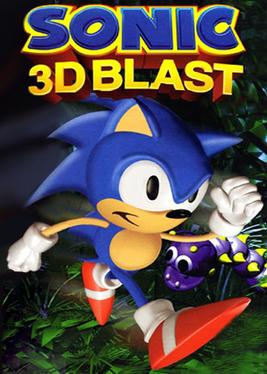
Sonic 3D Blast, known in Europe and Japan as Sonic 3D: Flickies' Island, is a 1996 platform game in the Sonic the Hedgehog series for the Sega Genesis and Sega Saturn. As Sonic the Hedgehog, the player embarks on a journey to save the Flickies, birds enslaved by Doctor Robotnik. The player must guide Sonic through a series of themed levels to collect Flickies and defeat Robotnik. Though it retains game mechanics from prior Sonic games, Sonic 3D Blast is differentiated by its 2D isometric perspective, with pre-rendered 3D models converted into sprites.

Sonic Jam is a video game compilation developed by Sonic Team and published by Sega for the Sega Saturn. It was released in Japan in June 1997 and in North America and Europe the following August. It contains the four main Sonic the Hedgehog games released on the Sega Genesis: Sonic the Hedgehog (1991), Sonic the Hedgehog 2 (1992), Sonic the Hedgehog 3 (1994) and Sonic & Knuckles (1994). It also features a 3D environment, "Sonic World", which doubles as an interactive museum of Sonic the Hedgehog content.

X-Men vs. Street Fighter is a crossover fighting video game developed and published by Capcom. It is Capcom's third fighting game to feature Marvel Comics characters, following X-Men: Children of the Atom and Marvel Super Heroes, and is the first installment in the Marvel vs. Capcom series. As the title suggests, the game includes characters from Marvel's X-Men franchise and the cast from Capcom's Street Fighter series. Originally released as a coin-operated arcade game in 1996, it was ported to the Sega Saturn in 1997 and the PlayStation in 1998.

Pandemonium! is a 1996 platform video game developed by Toys for Bob and published by Crystal Dynamics for the PlayStation, Sega Saturn, Microsoft Windows, N-Gage, mobile and iOS. Pandemonium! features Fargus, a joker, and Nikki, a sorceress, who unwittingly casts a spell that destroys the town. The goal of the game is to reach the Wishing Engine, where they can wish the town back to normal. For each level, the player can choose which character to be. Each has a special move – Fargus can deliver a special spinning attack, and Nikki can double jump. The game consists of a great variety of unique gameplay objects, such as watermelons, clouds, spider webs and logs. A sequel, Pandemonium 2, was released in 1997 for PlayStation and Microsoft Windows.

PowerSlave, known as Exhumed in Europe and 1999 AD: Resurrection of the Pharaoh in Japan, is a first-person shooter video game developed by Lobotomy Software and published by Playmates Interactive Entertainment in North America, and BMG Interactive in Europe and Japan. It was released in North America, Europe and Japan, for the Sega Saturn, PlayStation, and MS-DOS over the course of a year from late 1996 to late 1997. On May 24, 2015, Powerslave EX, an unofficial remake of the PlayStation version appeared on GitHub. The MS-DOS version of PowerSlave was added to the GOG store on November 19, 2020.

Bug! is a platform game developed by Realtime Associates and published by Sega for the Sega Saturn. It was first released in North America, in 1995, weeks after the Saturn's launch there; in Europe on September 15, 1995; and, in Japan, on December 8 the same year. It was also ported to Windows 3.1x and Windows 95 in 1996 by Beam Software. The game is one of the earliest examples of 3D platforming, as well as one of the first platform games released on the Saturn. Character movement is restricted to a track, unlike many in the genre that allow for unrestricted movement in all directions.

The Legend of Oasis, released as The Story of Thor 2 in Europe and as Thor ~Seirei Ou Kiden~ in Japan, is a 1996 action role-playing game developed by Ancient and published by Sega for the Sega Saturn. It is the successor and prequel to the 1994 title Beyond Oasis for the Sega Mega Drive/Genesis. The player takes the role of Leon, who must find the six elemental spirits and use their powers to fight the evil wizard Agito and his legions of creatures.

Blast Chamber is a 1996 action puzzle video game developed by Attention to Detail and published by Activision for the PlayStation and Sega Saturn. It was the first non-sports four-player game for the PlayStation and Saturn. A demo was released in 1997 for MS-DOS, but the full version was never published.

Iron Man / X-O Manowar in Heavy Metal is a video game published by Acclaim Entertainment and developed by Realtime Associates for the PlayStation, Sega Saturn, Game Boy, Game Gear, and MS-DOS in 1996. It is a one or two-player side-scrolling action game in which the player battles villains from Marvel Comics' Iron Man and Valiant Comics' X-O Manowar comic book series. It was met with negative reviews which criticized it for dull gameplay and outdated graphics.

Dark Savior is a 3D mixed-genre video game for the Sega Saturn created by Climax Entertainment. It was referred to by GameSpot as a sequel to the developer's game for the Sega Mega Drive/Genesis, Landstalker: The Treasures of King Nole, even though the games' storylines are unrelated and their gameplay is considerably different.
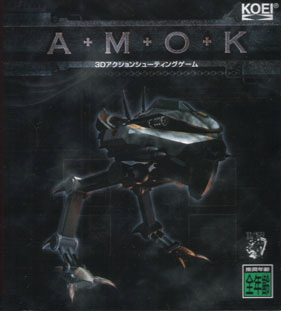
Amok is a 1996 mech-themed action video game for Windows and Sega Saturn. Players guide a robot called "Slambird" through nine different scenarios to complete several objectives. The game was noted for its use of voxel-based graphics for its environments rather than the polygonal models which were standard at the time of its release. Developed by Lemon, Amok began as a technology demo for the Sega 32X, but was reworked for the Saturn after Sega discontinued support for the 32X.

Maximum Force is a light gun shooter arcade game developed by Mesa Logic for Atari Games in 1997. In 1998, Atari Games re-released the game as part of one machine called Area 51/Maximum Force Duo that also included Area 51, and later ported the game to both the Sony PlayStation and Sega Saturn game consoles.
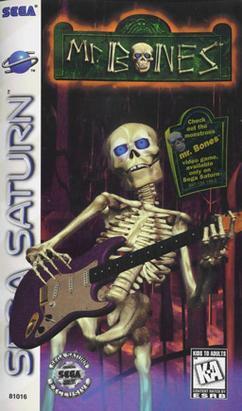
Mr. Bones is a multi-genre video game conceptualized by Ed Annunziata, developed by Zono and published by Sega for the Sega Saturn in 1996. The soundtrack to Mr. Bones was composed and performed by Ronnie Montrose, with cutscenes and art assets done by Angel Studios. The player takes on the role of a reanimated skeleton working to prevent the magician who revived him from using his undead army to ravage the world. Much of the gameplay relies upon effectively managing "skeletal magnetism", the magic which holds Mr. Bones's reanimated body together, and the game allows and at times requires Mr. Bones to operate with less than a full skeleton.
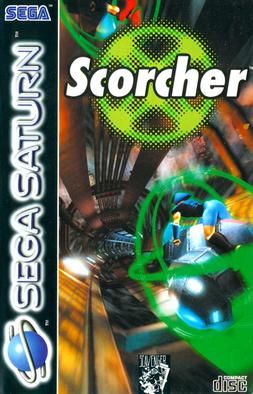
Scorcher is a futuristic racing video game by Danish developer Zyrinx, released in 1996 for the PC and in 1997 for the Sega Saturn. Originally announced under the name "Vertigo", the game focuses on special motorcycles that reach up to 450 km/h racing through dangerous tracks in a dystopian year 2021.

Krazy Ivan is a mecha first-person shooter video game developed and published by Psygnosis. It was released for Windows, Sega Saturn and PlayStation in 1996.

Sky Target is a 1995 arcade game by Sega. A rail shooter featuring a number of planes including the default F-14D Super Tomcat, it is best remembered for its semi-official connection to Sega's earlier hit After Burner. Although never billed as a sequel, its overt similarities to the 1987 classic were nonetheless referenced in official promotional materials and recognized by the media. Plus, it features a revised version of the "After Burner" music theme within its soundtrack.
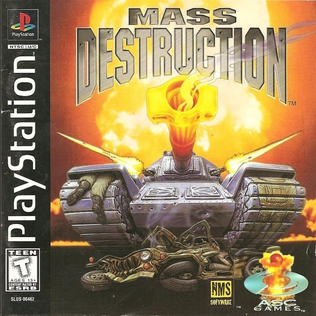
Mass Destruction is a 1997 third-person action game developed by NMS Software and published by ASC Games and BMG Interactive. Released for MS-DOS, the Sega Saturn, and the PlayStation, the game puts players in control of a tank, and tasks them with destroying enemy forces. It has often been likened to Return Fire.

Soviet Strike is a helicopter-based shooter game developed and published by Electronic Arts for the PlayStation in 1996 and the Sega Saturn in 1997. The game is a sequel to the Strike games which began on the Sega Genesis with Desert Strike: Return to the Gulf. Soviet Strike is the series' first installment for a 32-bit console and was first conceived as 32-bit Strike. Early on, it was intended for the 3DO console, before development changed to the PlayStation.



















